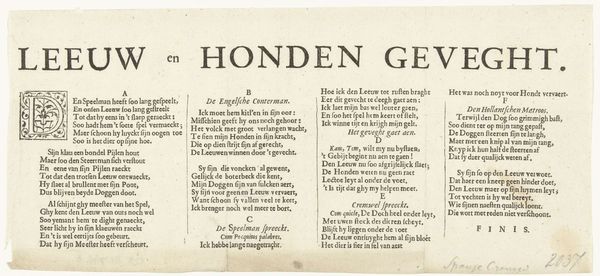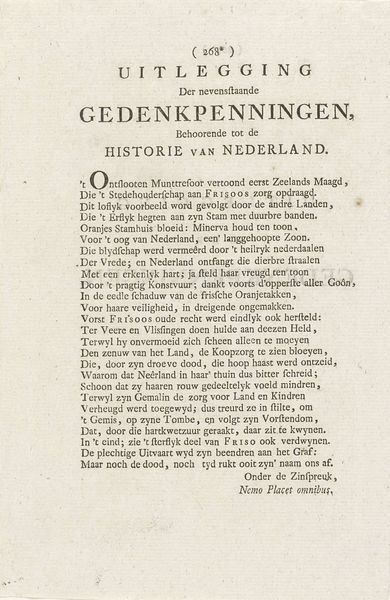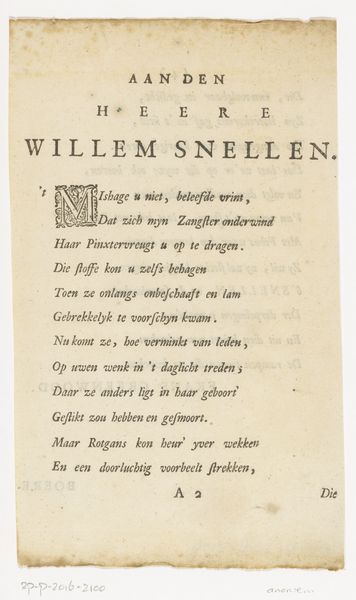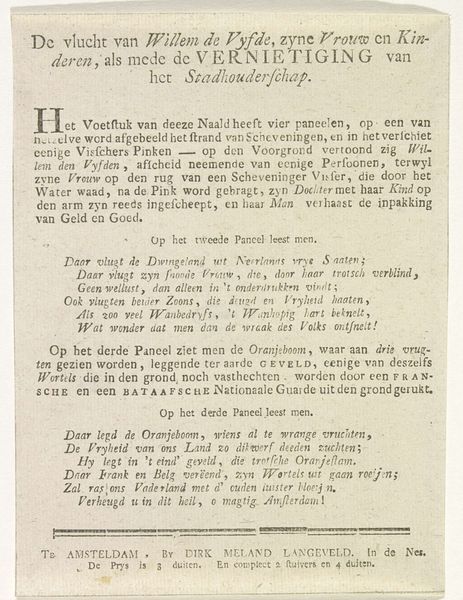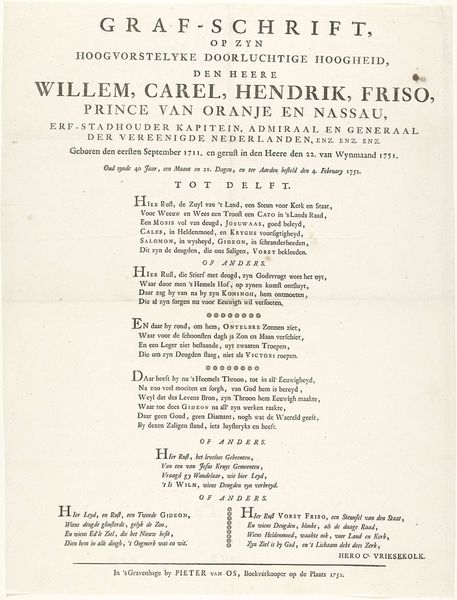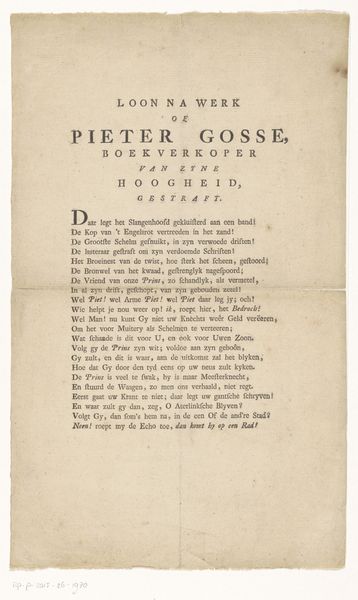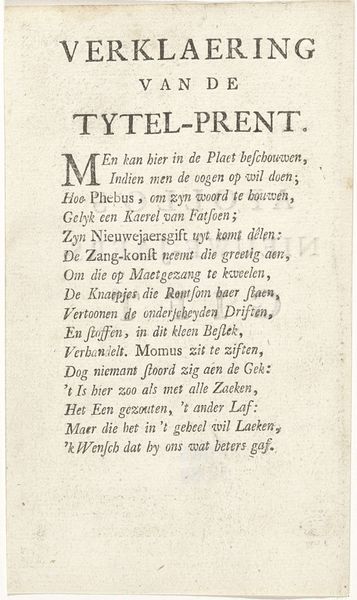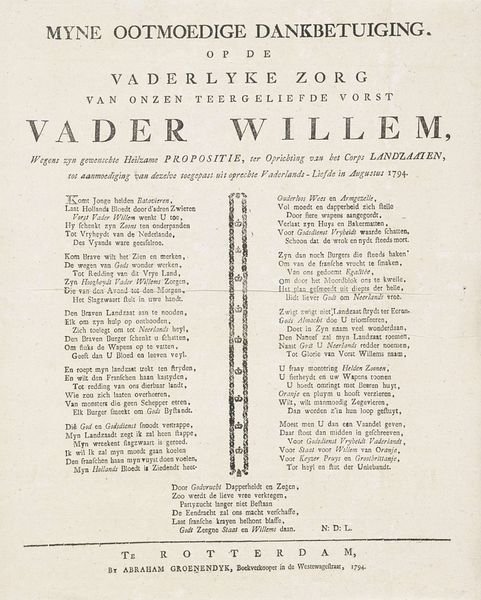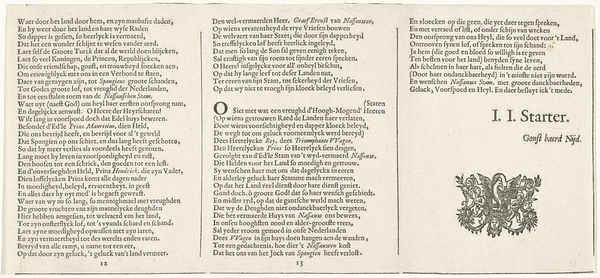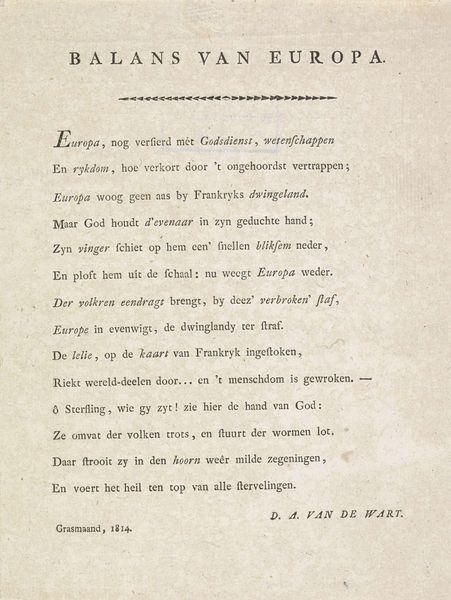
graphic-art, print, textile, paper, typography
#
graphic-art
#
neoclacissism
# print
#
textile
#
paper
#
typography
#
ink colored
Dimensions: height 228 mm, width 168 mm
Copyright: Rijks Museum: Open Domain
Editor: Here we have "Spotvers op Wilhelmina van Pruisen, 1787," an anonymous print from 1787. It's text-based, a poem perhaps? It's pretty fierce, almost like a threat. How do you interpret this work? Curator: This isn't just a poem, it's a "spotvers," a satirical verse, a kind of political dart thrown through words. Look at the way it calls Wilhelmina, the Princess of Orange, both "Deborah" and "Jezebel" – powerful female figures from the Bible, one a heroic judge, the other a deceitful queen. Editor: So, loaded language, definitely. Why those two figures? Curator: Precisely! Deborah evokes a leader, a warrior, suggesting Wilhelmina's strength and influence. But Jezebel? She represents corruption and manipulation. The poem accuses her of oppressing the "Burger," the common citizen. This duality creates a powerful tension – is she a savior or a tyrant? How do these images reflect on the historical narrative? Editor: It sounds like people felt she had too much power. Curator: Exactly. Consider the line "Prins Willems Vrouw, en anders niet" – "Prince William's Wife, and nothing more." It challenges her authority, suggesting she overstepped her bounds. Also, it mentions 'Patriots' breaking free and blood spilled – these were tumultuous times, and the poem is a snapshot of that political unrest, referencing anxieties and cultural tensions that had ignited. The verses point to cultural memory, to the continuity of certain figures as tools for social critique. Editor: That's fascinating, I hadn’t thought about it that way, like using historical figures as symbols. I see so much more in this than just some old poem. Curator: Indeed. The power of imagery, even in text, lies in its ability to evoke deeper cultural understanding, right? Spot on!
Comments
No comments
Be the first to comment and join the conversation on the ultimate creative platform.
